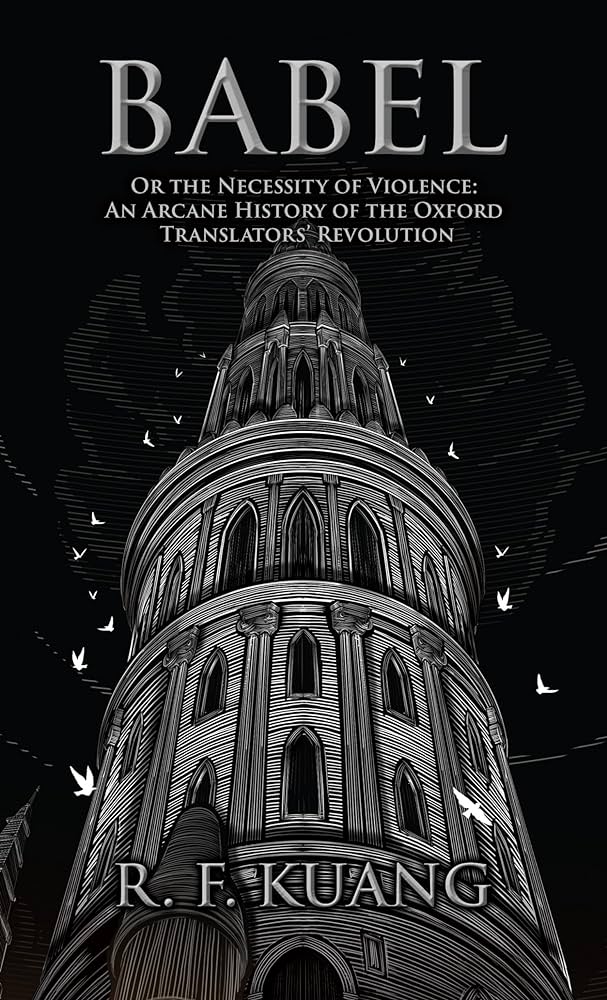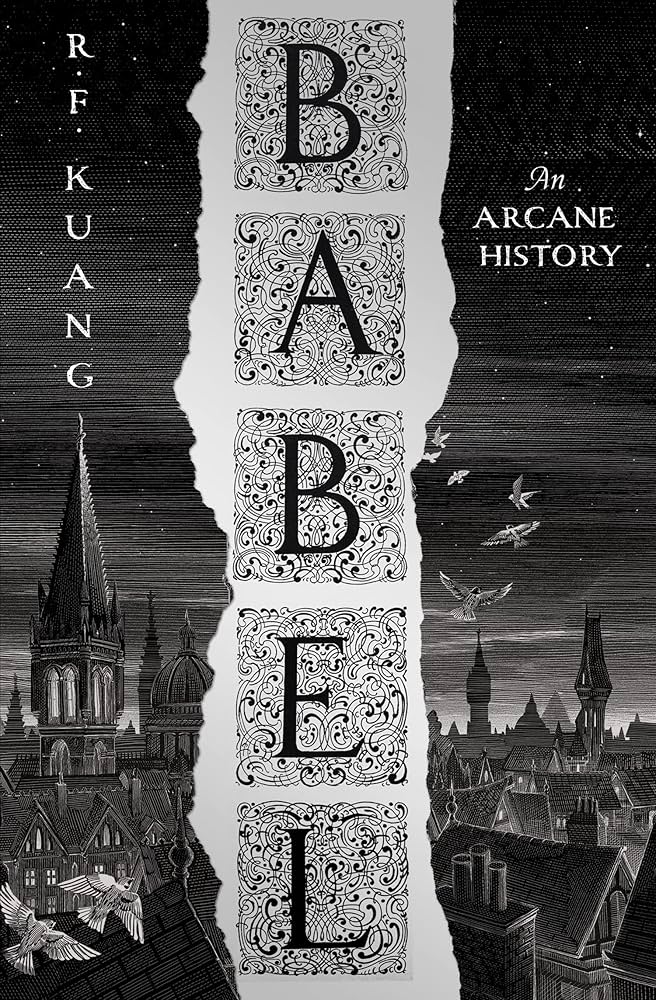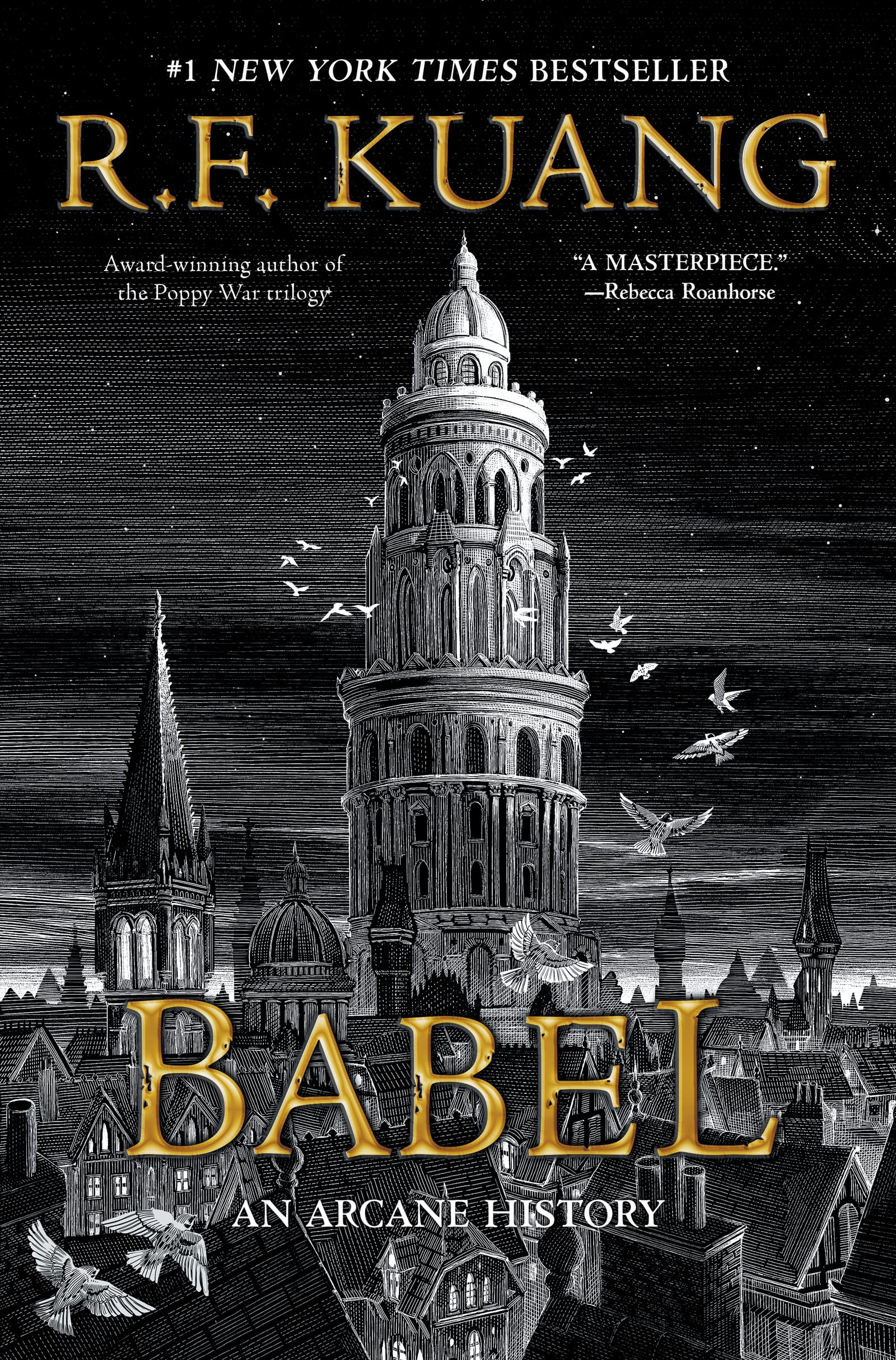SEMIOPUNK (36)
By:
August 1, 2025

An irregular, ongoing series of posts dedicated to surfacing examples (and predecessors) of the sf subgenre that HILOBROW was the first to name “semiopunk.”
BABEL (2022) | BABEL-17 (1966) | CAMP CONCENTRATION (1968) | A CANTICLE FOR LEIBOWITZ (1959) | CAT’S CRADLE (1963) | COSMONAUT KEEP (2000) | THE DIFFERENT GIRL (2013) | DOOM PATROL (1987–91) | THE EINSTEIN INTERSECTION (1967) | EMBASSYTOWN (2011) | ENGINE SUMMER (1979) | EXPLOITS AND OPINIONS OF DR. FAUSTROLL, PATAPHYSICIAN (1911) | FEERSUM ENDJINN (1994) | FLATLAND (1884) | FRIDAY (1982) | LE GARAGE HERMÉTIQUE (1976–79) | THE GLASS BEAD GAME (1943) | GLASSHOUSE (2006) | GRAVITY’S RAINBOW (1973) | THE HAMPDENSHIRE WONDER (1911) | LORD OF LIGHT (1967) | THE MAN WITH SIX SENSES (1927) | THE MOUNTAIN IN THE SEA (2022) | NINEFOX GAMBIT (2016) | ODD JOHN (1935) | PATTERN RECOGNITION (2003) | THE PLAYER OF GAMES (1988) | RIDDLEY WALKER (1980) | RODERICK (1980–83) | SNOW CRASH (1992) | THE SOFT MACHINE (1961) | SOLARIS (1961) | THE SPACE MERCHANTS (1953) | THE THREE STIGMATA OF PALMER ELDRITCH (1964) | TIME OUT OF JOINT (1959) | UBIK (1969) | VALIS (1981) | A VOYAGE TO ARCTURUS (1920) | VURT (1993) | WHITE NOISE (1985).
BABEL
R.F. Kuang’s Babel (2022) is categorized as historical fantasy (also, sometimes, as “dark academia” — though I don’t think it fits the bill). However, if we think of it as a fantasy the magic of which is made possible via semiotic conjuration, and if we agree that semiotics is (to quote Saussure) “a science which studies the role of signs as part of social life,” then perhaps we might instead categorize Babel as semiopunk sf. Yes, yes — describing Kuang’s characters as engaging in semiotic activity is anachronistic, since Babel is set in 1830s England, while Saussure and Peirce wouldn’t begin writing on semiotics until the 1860s. (Saussure’s Cours de linguistique générale wouldn’t be published until 1916.) Bear with me, though….
In Kuang’s alternate version of world history, Professor Lovell is one of a cohort of brilliant Oxford “translators” tasked — using empirical experimentation, which adds to this reader’s sense that Kuang’s genre, here, is at least somewhat science-fictional — with tapping into and controlling the forces inhering in the art and science of translating words from one language into another. If one can find the correct pairing of cross-language terms that appear to be (yet aren’t entirely) synonymous, and then engrave these onto a silver bar… the bar will begin to radiate energy specific to that pairing. The silver bars produced by Oxford’s cadre of silver-working translators are imbued with magic that boost and enhance technologies in spheres from industrial production and agriculture to warfare or healing. Bullets become more accurate, locomotive engines more powerful, etc.
A fervent supporter of the British Empire, Lovell has sired a child with a Chinese woman, then whisked him away first to London, then eventually to Oxford; his goal in doing so, we’ll discover, is a patriotic and imperialist one. Robin Swift, who doesn’t know the truth about his parentage, is the novel’s protagonist. (While there are some first-person interludes, the narrative is predominantly from an external, third-person perspective.) We learn about Lovell’s work, and the larger social, cultural, political, and economic issues at stake, through Robin as his consciousness is raised. If the book is at times didactic and two-dimensional, it makes crucial points.
Robin is tutored rigorously, particularly when it comes to learning Latin, ancient Greek, and Chinese. After gaining entrance into the rarified world of Oxford, he joins an elite group of students training to become translators. (Silver bars have been used globally for a millennium, were given to understand… but mastering the skill requires education and time.) The building in which Robin and his fellows study and work is called… Babel.
Over the course of the book, Robin will discover that London, also known as the Silver City, is the richest and largest city in the world — because (thanks to colonial extraction) it controls the largest silver ore reserves, and because (thanks to empire-building) the world’s languages also flow through it. The British empire’s silver bars, however, have begun losing their efficacy; as languages spread, it seems, the dynamic tension that inheres in translation between the languages lessens. To protect Great Britain’s power and status, Oxford’s translators are increasingly dependent on non-Romance and non-Germanic languages. In order to properly develop the magic silver bars, the translators who do so must be so fluent in the languages used that they can dream in those languages. English-Mandarin translation pairs are particularly potent, but fewer than five people in the world are fluent enough in both to work the necessary magic. Hence Lovell’s development of Robin.
Robin’s closest friends, at Babel, are Ramy from Calcutta, Victoire from Haiti, and Letty, a white British admiral’s daughter. They learn how to spelunk “that sublime, unnameable place where meaning [is] created.” Though they’re second-class citizens at Oxford, the friends are seduced by the prospect of belonging in this rarified space; at first, anyway, the non-white characters are able to remain ignorant of how translation work assists in the oppression of their home countries. However, when Robin’s half-brother, another half-Chinese son of Professor Lovell, recruits him into the Hermes Society, a clandestine organization seeking to undermine Britain’s silver supremacy, Robin’s loyalties will be tested. Eventually, we’ll arrive at the titular Oxford Translators’ Revolution.

The general idea of Babel, and Kuang’s word-magic specifically, is a very good one, so even though the story telling is rather heavy-handed at times, and the last third of the book — which ought to be the most exciting part, a translators’ revolution — is a slog, I’m a fan.
“The power of the [silver] bar lies in in words,” explains one of Robin’s Oxford instructors. “More specifically, the stuff of language that words are incapable of expressing — the stuff that gets lost when we move between one language and another.” Kuang is writing about translation, but of course the ineffable “stuff of language,” which can’t ever be directly known, is also central to the science of semiotics established by Saussure and Peirce. In Roland Barthes’ The Fashion System (1967), for example, we find everyone’s favorite semiotician (in his post-structuralist phase) describing the signified as an “undefined mass of concepts, which could be compared to a huge jellyfish, with uncertain articulations and contours.” Earlier, during his structuralist era, we find Barthes writing (in 1957’s Mythologies) that the signified “is a kind of nebula, the condensation, more or less hazy, of a certain knowledge.”
We commercial semioticians rarely bring this sort of thing up with our clients, who demand certain knowledge, but Barthes’ articulation of the eerie, uncanny nature of the signified is central to our discipline. We have found a way to leverage the uncanny nature of meaning in language to our client’s benefit and our profit. So have Kuang’s silver-working translators. The difference being that while Kuang’s translators are exploiting the energy sparked in the meaning-gap between words in different languages, semioticians will tell you that innumerable meaning-gaps exist within any given language, or culture, or semiosphere.
Robin has a proto-Saussurean insight, towards the end of the book:
But what struck [Robin] most just then was the beauty. The bars were singing, shaking; trying, he thought, to express some unutterable truth about themselves, which was that translation was impossible, that the realm of pure meaning they captured and manifested would and could not ever be known, that the enterprise of this tower had been impossible from inception.
For how could there ever be an Adamic language? The thought now made him laugh. There was no innate, perfectly comprehensible language. There was no candidate — not English, not French — that could bully and absorb enough to become one. Language was just difference. A thousand different ways of seeing, of moving through the world. No, a thousand worlds within one. And translation, a necessary endeavor however futile, to move between them.
Saussure, as we know, emphasized that the relationship between a word’s form (signifier) and its meaning (signified) is arbitrary and based on convention. The biblical Tower of Babel story can be seen as reflecting this arbitrary nature. Because there’s no fixed, inherent link between words and concepts, languages can diverge and multiply, leading to communication breakdowns. Saussure also argued that language is a “social fact,” i.e., a system of conventions established by a linguistic community, not something innate or natural. Which would give rise to Barthes’ crusading efforts to reveal the obfuscatory nature of myth in contemporary French society.
As the excerpt above demonstrates, Kuang writes passionately, intelligently, and lyrically about meaning-gaps between and within languages. I could wish that her writing about language as a tool of control and oppression was at the same level, but this doesn’t mean that I disagree with her point — or wish that her book didn’t use translation as a metaphor for the broader processes of colonization. All in all, it’s an extraordinary achievement.
Let’s give Kuang herself the final word:
“It’s a love letter and breakup letter to Oxford. It gnaws at questions that have bothered me since I started graduate school — chiefly the brokenness of academia, and the sacrifices that true change might require,” Kuang has explained in an interview about Babel. “It’s all the gnarly, bizarre, fascinating facets to linguistics, translation, and colonialism I’ve been studying over the past few years.”

Babel debuted in the top spot on The New York Times Best Seller list, and it was awarded the Nebula Award for Best Novel. It’s been optioned for a film or TV adaptation by the producers of the Twilight films. I can’t wait.
Kaung’s Katabasis (which I think actually is dark academia fantasy) comes out at the end of the month.
JOSH GLENN’S *BEST ADVENTURES* LISTS: BEST 250 ADVENTURES OF THE 20TH CENTURY | 100 BEST OUGHTS ADVENTURES | 100 BEST RADIUM AGE (PROTO-)SCI-FI ADVENTURES | 100 BEST TEENS ADVENTURES | 100 BEST TWENTIES ADVENTURES | 100 BEST THIRTIES ADVENTURES | 75 BEST GOLDEN AGE SCI-FI ADVENTURES | 100 BEST FORTIES ADVENTURES | 100 BEST FIFTIES ADVENTURES | 100 BEST SIXTIES ADVENTURES | 75 BEST NEW WAVE SCI FI ADVENTURES | 100 BEST SEVENTIES ADVENTURES | 100 BEST EIGHTIES ADVENTURES | 75 BEST DIAMOND AGE SCI-FI ADVENTURES | 100 BEST NINETIES ADVENTURES | 75 BEST HADRON AGE SCI-FI ADVENTURES.
